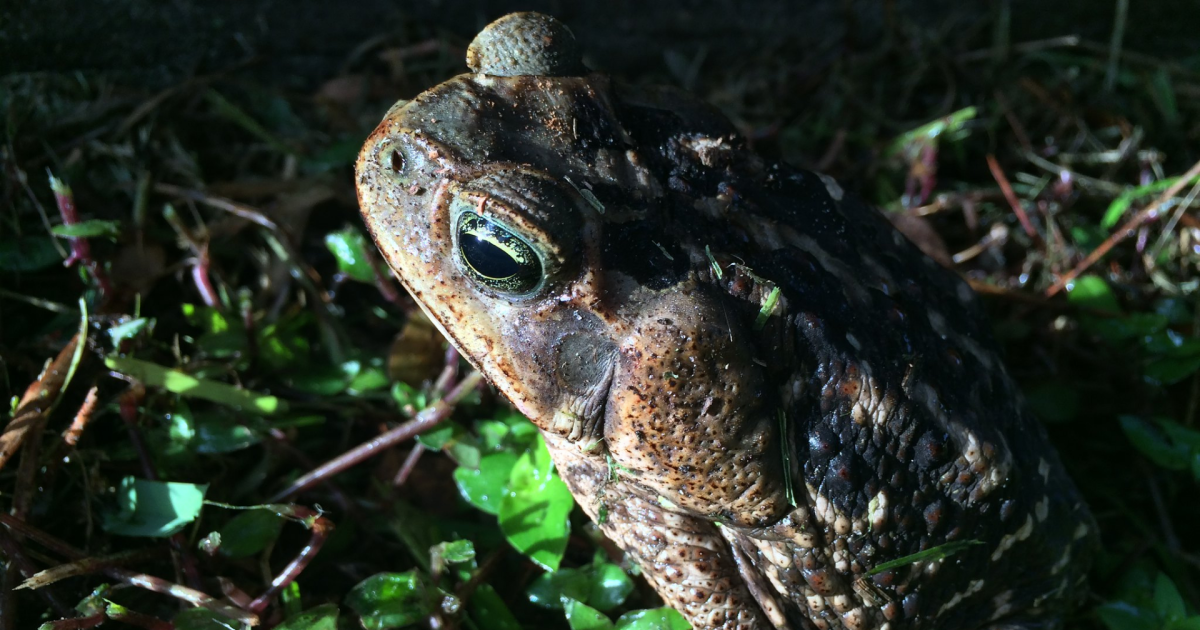Beware of Deadly Cane Toads in SWFL
Southwest Florida is renowned for its beautiful beaches, diverse wildlife, and mild climate. However, amidst this natural splendor lurks a hidden danger – the deadly cane toad. These invasive amphibians pose a significant threat to both native wildlife and pets, making it crucial for residents and visitors to be aware of their presence and take necessary precautions. In this article, we will explore the dangers of cane toads in SWFL and provide guidance on how to stay safe.
The Invasives That Are Taking Over
Cane toads, scientifically known as Rhinella marina, are large amphibians native to Central and South America. Unfortunately, they were introduced to South Florida in the 1950s with the misguided intent of controlling agricultural pests. However, these toads have thrived in their new environment, displaying voracious appetites and even poisoning potential predators.
A Potent and Deadly Secret
One of the most alarming characteristics of cane toads is the poison they secrete. These toads possess glands on their skin that release a potent toxin called bufotoxin, which can be deadly to small animals and even pose a threat to humans. Their bright warning coloration serves as a deterrent to predators, indicating that they are toxic and should be avoided at all costs.
The Impact on Native Wildlife
The introduction of cane toads in SWFL has had devastating effects on the region’s native wildlife. Many of the smaller predators in the area, like snakes, lizards, and birds, have fallen victim to the toad’s toxic defense mechanism. For the predators that manage to survive after a poisonous encounter, they often develop a taste aversion, as the toxin causes severe sickness. This aversion can disrupt the delicate balance of the ecosystem and result in a decline in native wildlife populations.
A Threat to Our Furry Friends
While native wildlife face significant risks from cane toads, our beloved pets are also vulnerable to their toxic effects. Dogs, in particular, fall victim to cane toad poisoning more frequently due to their curious and playful nature. If ingested or bitten by a cane toad, dogs can experience excessive drooling, disorientation, seizures, and, in severe cases, death. It is crucial for pet owners to remain vigilant and prevent their furry companions from encountering these deadly toads.
Preventing Cane Toad Encounters
There are several measures that residents, visitors, and pet owners in SWFL can take to mitigate the risks associated with cane toads:
- Keep gardens and yards free from debris, as cane toads are attracted to dark, cool places.
- Seal any openings in fences or walls to prevent cane toads from entering your property.
- Turn off outdoor lights at night, as these can attract insects and subsequently attract cane toads.
- Supervise pets during outdoor activities, especially at night when the toads are most active.
- Train dogs to avoid any interaction with cane toads and seek immediate veterinary attention if you suspect cane toad poisoning.
- Inform your neighbors and community about the risks of cane toads and encourage responsible pet ownership.
Working Together to Combat the Threat
Protecting and preserving the delicate ecosystems in SWFL requires a collective effort. Environmental organizations, local communities, and government agencies are actively working together to combat the menace of cane toads. They conduct educational campaigns, raise awareness, and implement measures to monitor and control invasive species.
Reporting Cane Toad Sightings
If you come across a cane toad in SWFL, it is important to report the sighting. Several online platforms and hotlines are available for residents to report invasive species sightings, including cane toads. By documenting their presence, authorities can better understand the distribution and take appropriate action to mitigate the threats posed by these invasive amphibians.
A Call for Responsible Environmental Stewardship
In conclusion, the presence of deadly cane toads in SWFL is a serious concern that demands attention and action. By staying informed, taking preventative measures, and reporting sightings, residents and visitors can help reduce the impact of these invasive amphibians on native wildlife and protect their beloved pets. It is our collective responsibility to act as responsible environmental stewards and ensure the preservation of the unique natural beauty that Southwest Florida has to offer.
*Source www.fox4now.com




































